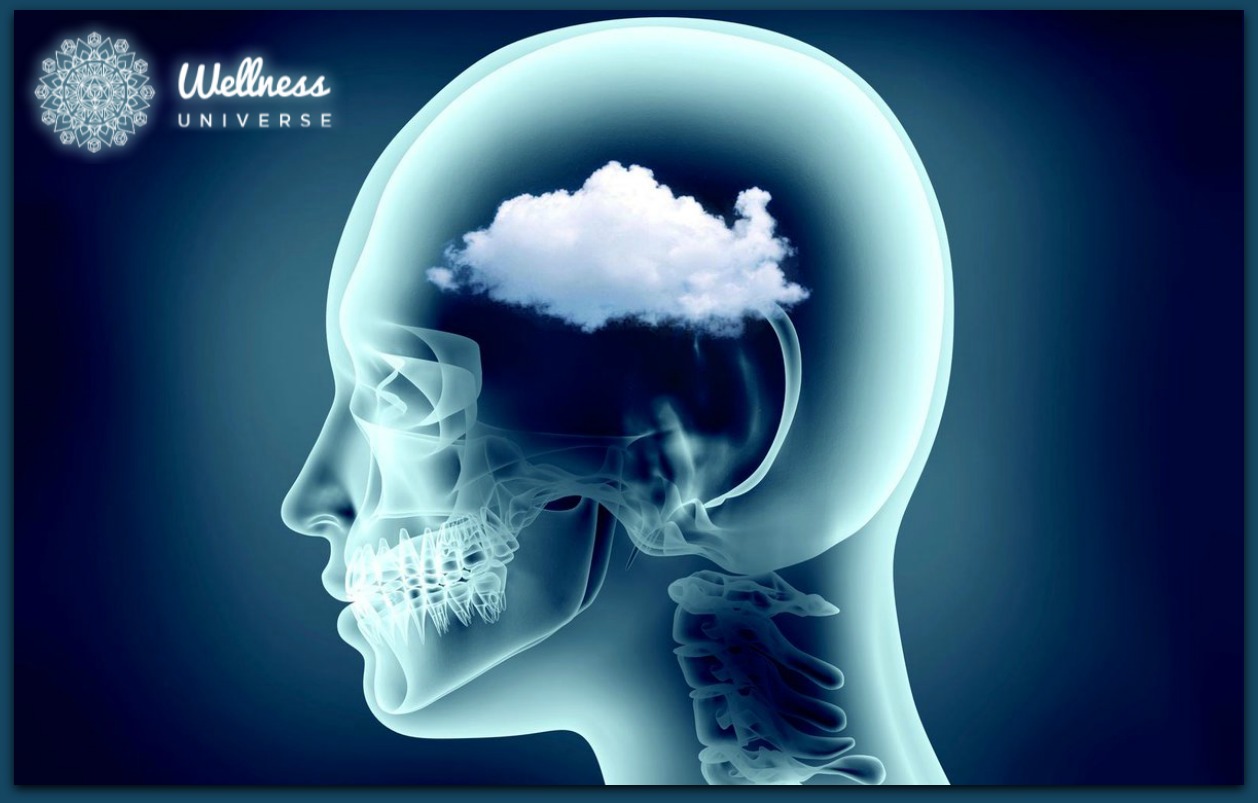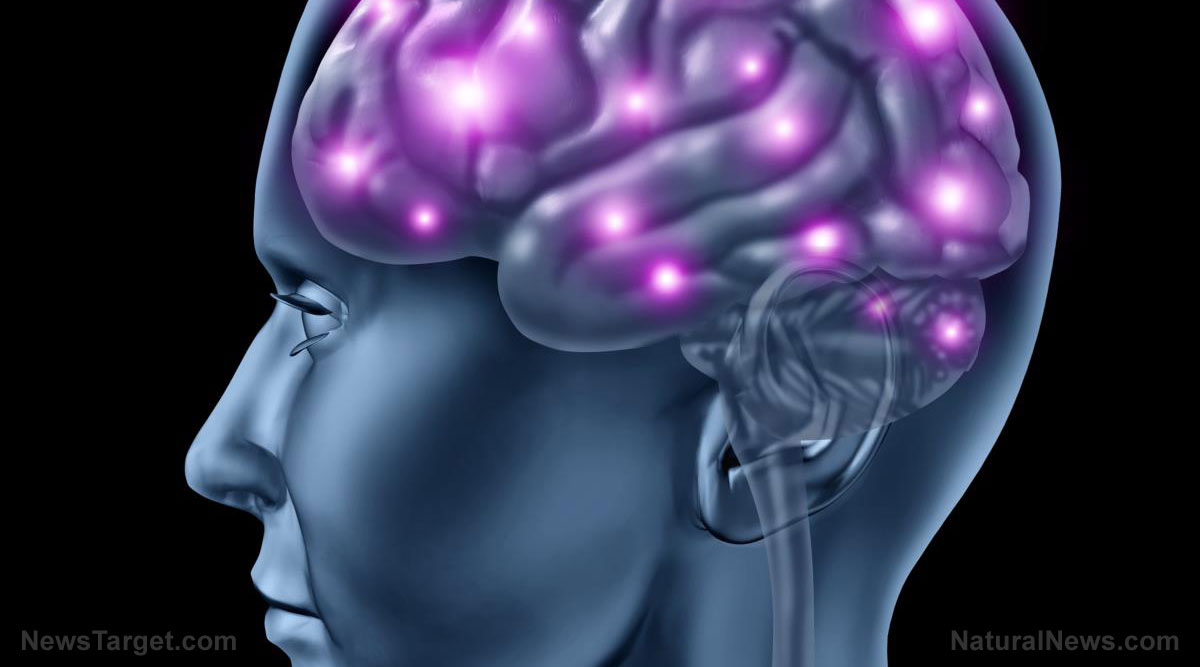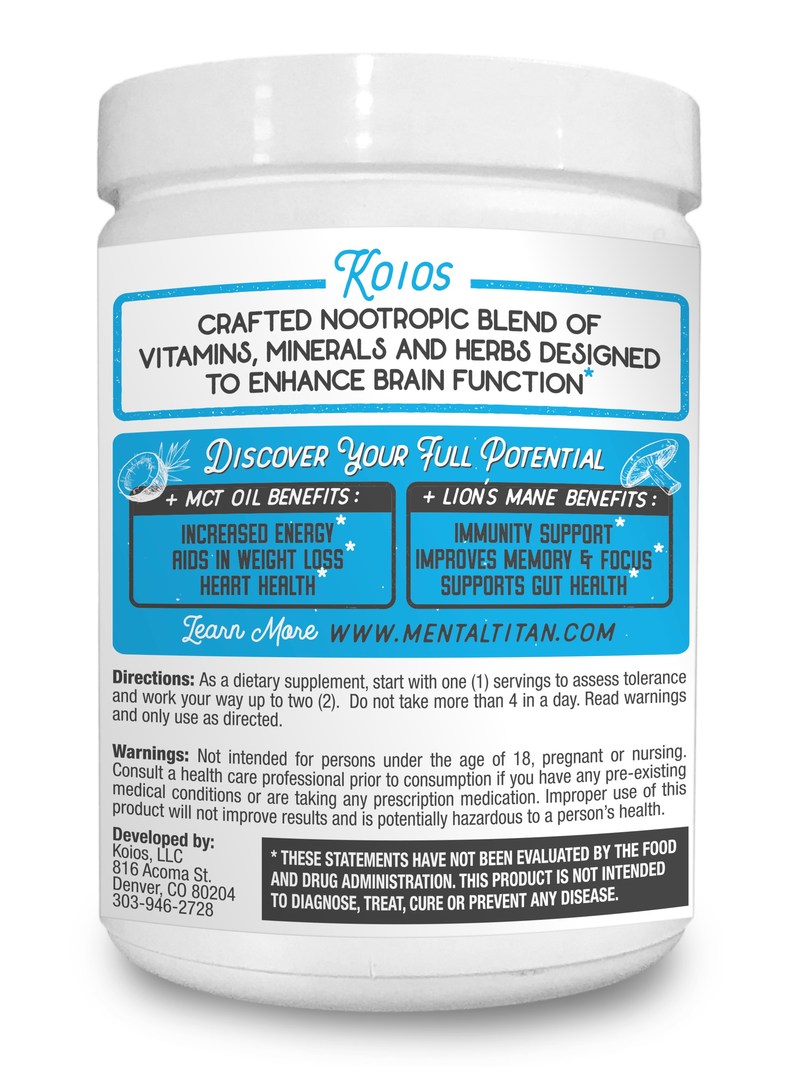Nature Knows and Psionic Success
God provides
National events boost city’s economy

If you woke up this morning feeling a little smarter, a little sharper of mind, it could well be the city’s collective consciousness at work. Two national-scale brain-a-poloozas are underway at the same time in the city. Northern FanCon (NFC) is waving the flags of popular culture at CN Centre while the Canadian Association of Science Centres (CASC) conference is pushing the buttons of science, technology, engineering, art and math at The Exploration Place. These thinkfests are also lucrative for the local economy. It has triggered local money to be spent into the city’s economy, in the organizational and operational phases, and both also draw investment and human interaction in from outside communities. In both cases, international attention is now on Prince George. "Hosting a national conference versus a provincial conference means that delegates are coming from all across Canada and at times the U.S. and overseas," said Shirly Prokopchuk, the Meetings & Conventions manager for Tourism Prince George. "For the majority of these delegates, it will be their first time in Prince George. The first impression is what counts. On the tourism side, it is our job as ambassadors of Prince George to provide that friendly, caring and positive experience, so that they will want to come back. With this means more visitors to Prince George which equals a increase in economic impact." The location that hosts the most impactful conferences for the economy is the Prince George Civic & Convention Centre, due to its size and downtown location. It played a major role in the 2015 Canada Winter Games, the annual BC Natural Resources Forum, and the biennial Council of Forest Industries convention and the Canadian Bioeconomy Conference and Exhibition. CN Centre is another place that holds court for national gatherings, both sport and industrial. "Hosting conferences […]
9 Health Benefits Of Shankhpushpi, A Herbal Remedy

This popular ayurvedic and unani remedy is derived from the plant of the Convolvulus pluricaulis . It draws its name from its flowers with their characteristic conch shape (shankha in Sanskrit). In some regions of the Indian subcontinent, the source plant for the shankhpushpi could be Evolvulus alsinoides Linn , Clitorea ternatea Linn , or Canscorade cussata Schult . If you took a quick look at the elegant but delicate flowers of the shankhpushpi plant, you wouldn’t guess how much the plant could do for you. But the herbal remedy that utilizes the root, leaves, and other parts of this plant can sort out a range of health problems and is great for your brain, nervous system, and heart. Here’s a detailed look. 1. Boosts Cognition And Memory As a memory-boosting remedy, shankhpushpi powder is combined with milk and honey and taken every morning for a few months or as prescribed by an ayurvedic practitioner. 1 Shankpushpi is also often given as tonics for brain development in children. Shankhpushpi is renowned as a brain tonic. Ayurveda counts shankhpushpi among the group of herbal remedies known as “medhya rasayana.” These remedies help boost cognition or the ability to learn and have drawn interest due to the absence of major adverse side effects associated with mainstream remedies. 2 Shankhpushpi is believed to help improve the intellect and boost your memory. Some animal studies have backed up these claims, with test animals showing improvement in memory and learning after being administered the plant extracts. 3 2. Has Digestive Benefits The herbal remedy has a range of digestive health benefits. On the one side, it can stimulate your appetite while, on the other, it can help with bowel problems like dysentery. 4 Shankhpushpi can also act as a laxative, expelling any gas in […]
5 Easy Remedies to Clear Brain Fog

At some point, most people experience the effects of brain fog. Although it isn’t a true medical diagnosis, it’s still very real and can be quite debilitating. Brain fog makes focus and concentration difficult. It can affect memory, mood, and can even cause confusion. While there can be many causes for it, here are the top five reasons and remedies for getting your brain back into shape. Sleep. The brain processes enough information each day to shut down a laptop in a week. With so much information flooding our brain, it’s only natural we might have trouble processing all of it. Sleeping is our body’s way of not only resting but flushing the neurotoxins which accumulate as a result of processing so much information. It’s kind of like how our computers need to clear the cache to run more effectively. When the cache doesn’t get cleaned regularly, the computer’s performance suffers. It’s the same with our brain. When we don’t get enough sleep, it can affect many systems in the body that regulate everything from mood to the ability to learn. There are several natural ways to help you get the sleep you need. Herbal supplements, fragrances, teas, are but a few. Other methods are singing bowls to clear your crown chakra, soothing music, nature sounds, and meditation. Water. Because the brain is 85% water, keeping it adequately hydrated is imperative to cognitive function. Even if the brain is only 2% dehydrated, a person could experience up to a 5% reduction in cognitive ability. This results in trouble focusing, short-term memory loss, and difficulty completing simple math problems like calculating how much time is left until those cookies are ready to come out of the oven. You may already be aware of the recommendation of eight glasses of water […]
Drugs That Cause Memory Loss (& what you can do)

There are many kinds of prescription drugs and OTC medications that cause memory loss. See if any drugs you take are on our lists. According to Harvard University, prescription drugs cause over 128,000 deaths per year in the United States. ( 1 ) Shockingly, this does not count deaths in nursing homes — an estimated additional 350,000 deaths annually. ( 2 ) Adverse drug reactions are now the fourth leading cause of death in the US and the fifth leading cause of death in Europe. ( 3 , 4 ) More emergency room visits result from prescription medications than from illicit drugs, alcohol, and recreational drug use combined. ( 5 ) It’s very clear that medications carry risks and one of the most common side effects is memory loss. The 3 Worst Categories of Drugs for Memory Loss If you are taking any prescription medication that is affecting your memory, it’s probably one of three kinds of drugs known to cause memory loss and other cognitive problems. Anticholinergics — The “Anti” Drugs If you take a drug that starts with “anti,” such as antihistamines, antidepressants, antipsychotics, antibiotics, antispasmodics, or antihypertensives, it’s likely that it will affect your acetylcholine level. Acetylcholine is the primary neurotransmitter of memory and learning. When you’re low in acetylcholine, you become forgetful, can’t concentrate, or can’t think of the right word. Acetylcholine deficiencies are associated with dementia and Alzheimer’s, and medications for these disorders work by preventing the breakdown of acetylcholine in the brain. ( 6 ) Drugs that block the action of acetylcholine are known as anticholinergics . Common side effects of anticholinergic drugs include: confusion blurred vision constipation dry mouth lightheadedness difficulty starting and continuing to urinate loss of bladder control Low acetylcholine can lead to a group of symptoms that resembles dementia […]
Breathe in, breathe out for a sharper mind

Breath-focused meditation and yogic breathing practices have numerous known cognitive benefits, including increased ability to focus. (Photo: Pixabay) Sharpen your mind with meditation and breathing exercises, say researchers. A new study by researchers at Trinity College Dublin explains for the first time the neurophysiological link between breathing and attention. Breath-focused meditation and yogic breathing practices have numerous known cognitive benefits, including increased ability to focus, decreased mind wandering, improved arousal levels, more positive emotions, decreased emotional reactivity, along with many others. To date, however, no direct neurophysiological link between respiration and cognition has been suggested. The research shows for the first time that breathing – a key element of meditation and mindfulness practices – directly affects the levels of a natural chemical messenger in the brain called noradrenaline. This chemical messenger is released when we are challenged, curious, exercised, focused or emotionally aroused, and, if produced at the right levels, helps the brain grow new connections, like a brain fertiliser. The way we breathe, in other words, directly affects the chemistry of our brains in a way that can enhance our attention and improve our brain health. The study, carried out by researchers at Trinity College Institute of Neuroscience and the Global Brain Health Institute at Trinity, found that participants who focused well while undertaking a task that demanded a lot of attention had greater synchronisation between their breathing patterns and their attention than those who had poor focus. The authors believe that it may be possible to use breath-control practices to stabilise attention and boost brain health. Lead author Michael Melnychuk explained: "Practitioners of yoga have claimed for some 2,500 years, that respiration influences the mind. In our study, we looked for a neurophysiological link that could help explain these claims by measuring breathing, reaction time, and brain […]
Researchers explain neurophysiological link between breathing and attention

It has long been claimed by Yogis and Buddhists that meditation and ancient breath-focused practices, such as pranayama, strengthen our ability to focus on tasks. A new study by researchers at Trinity College Dublin explains for the first time the neurophysiological link between breathing and attention. Breath-focused meditation and yogic breathing practices have numerous known cognitive benefits, including increased ability to focus, decreased mind wandering, improved arousal levels, more positive emotions, decreased emotional reactivity, along with many others. To date, however, no direct neurophysiological link between respiration and cognition has been suggested. The research shows for the first time that breathing – a key element of meditation and mindfulness practices – directly affects the levels of a natural chemical messenger in the brain called noradrenaline. This chemical messenger is released when we are challenged, curious, exercised, focused or emotionally aroused, and, if produced at the right levels, helps the brain grow new connections, like a brain fertilizer. The way we breathe, in other words, directly affects the chemistry of our brains in a way that can enhance our attention and improve our brain health. The study, carried out by researchers at Trinity College Institute of Neuroscience and the Global Brain Health Institute at Trinity, found that participants who focused well while undertaking a task that demanded a lot of attention had greater synchronization between their breathing patterns and their attention, than those who had poor focus. The authors believe that it may be possible to use breath-control practices to stabilize attention and boost brain health. Michael Melnychuk, PhD candidate at the Trinity College Institute of Neuroscience, Trinity, and lead author of the study, explained: "Practitioners of yoga have claimed for some 2,500 years, that respiration influences the mind. In our study we looked for a neurophysiological link that could […]
Koios Subsidiary, Cannavated, To Develop Line Of Cannabis Functional Beverages
Koios Beverage Corp. (CSE: KBEV; OTC: SNOVF) (the “Company” or “Koios”), is pleased to announce the creation of Cannavated Beverage Co. (“Cannavated”), a wholly-owned subsidiary that will be among the first companies to produce cannabis-infused beverages. Koios brings its proven experience in the functional beverage industry to the growing cannabis sector. Cannavated drinks will have all of the nootropic health benefits of the winning Koios drink formula, and will target medical cannabis users, who have long called for more choice in the market. “The industry has proven it is going in the direction of cannabis-infused drinks,” said Chris Miller, CEO of Koios. “It’s healthier. Nobody wants to smoke anymore. The market for beverages is vast, especially when you consider the aging population and the demand for medical cannabis among seniors.” Cannavated’s longer-term plans include partnering with licensed producers, cultivators and other regulated cannabis companies who want to sell their own line of cannabis drinks. By entering into a “white labelling” turn-key agreement, companies will be able to sell Cannavated drinks under their own brand names and labels. “We have used hemp oil in our previous product line due it’s cognitive benefits and perfect balance of omega’s,” added Miller. “Using our existing knowledge and experience in the beverage space not only allows us to help licensed producers, but to also reach a wider audience of health-conscious consumers. We are especially excited about the possibility of combining CBDs with our proprietary nootropic blend to create a cannabis-based cognitive beverage.” The introduction of Cannavated enables Koios to target a whole new demographic, increasing its market reach with a broader and expanding base of consumers. Market demand is expected to grow beyond medical users once the Canadian government legalizes cannabis for recreational use, likely to happen later this year. The functional beverage market […]
Do you know why our eyesight is sharpest at dawn and dusk?

( Natural News ) If you’ve ever been up at the crack of dawn or still outside when dusk falls, you may have noticed your sight is sharper than usual. A German study says this is because your brain changes the way it interprets visual signals during sunrise and sunset, according to a New Scientist article . Study author Christian Kell explained that our brain is always hard at work in the background. But come dawn or dusk, this continual background activity drops in the visual cortex, the parts of the brain that interpret visual information. Thanks to this reduction in signal-to-background noise ratio, the human visual cortex is able to focus on perceiving poorly-lit surroundings and objects. That’s why we can see better despite the low levels of light during those times. “You are sensitizing your brain. A weak signal coming in will have a higher signal-to-noise ratio,” explained Kell, a neuroscientist at the Goethe University . He and his colleagues determined this through an experiment with 14 men. They asked the participants to spot a faint, flashing orange cross against a pitch black background at different times of the day. They reported that the participants succeeded the most in their task at around 8:00 a.m. and 8:00 p.m. (Related: Prevent vision loss by protecting your heart with a healthy diet .) Ancient humans needed improved vision during dawn and dusk to avoid predators The Goethe University research team scanned the brains of the participants six times from 8:00 a.m. to 11:00 p.m.. They found out that the brain shuts down background activity in the visual cortex during 8:00 a.m. and 8:00 p.m. Get more news like this without being censored : Get the Natural News app for your mobile devices. Enjoy uncensored news, lab test results, videos, […]
Researchers create memory prosthesis that can boost recall in humans by around 40 percent

( Natural News ) The human brain holds many mysteries, among which are the specifics of how exactly memories work. There are a lot of different theories as to how the brain operates as far as memory as a function is concerned, but now researchers have finally made some real progress towards a better understanding of it. To be more specific, a group of scientists from the Wake Forest Baptist Medical Center and the University of Southern California (USC) have managed to develop a new kind of “prosthetic system” which is said to use an individual’s memory patterns to tap into the brain’s natural ability to encode and recall memory. The researchers shared the details of their method in a paper titled , “Developing a hippocampal neural prosthetic to facilitate human memory encoding and recall,” which was published recently in the Journal of Neural Engineering . Their study looked at the short-term memory of the participants, which ended up showing significant improvement – about 35 to 37 percent – over the baseline measurements by the end of all tests and experiments. According to Dr. Robert Hampson, a professor at the Wake Forest Baptist Medical Center and the lead author of the study, the method they used to artificially boost the short-term memory performance of study participants is something that has never been done before. “This is the first time scientists have been able to identify a patient’s own brain cell code or pattern for memory and, in essence, ‘write in’ that code to make existing memory work better,” he explained, “an important first step in potentially restoring memory loss.” (Related: Want to improve your memory or ability to concentrate? Lutein in avocados shown to boost eye and brain health .) Support our mission to keep you informed : Discover […]
10 Yummy, brain-boosting foods that prevent neurocognitive decline

( Natural News ) For a lot of people, the concept of growing old isn’t thrilling because of one thing: cognitive decline which is one of the hallmark signs of aging. In particular, memory loss, forgetfulness, a decreased ability to maintain focus, and reductions in problem-solving abilities are all part of the cognitive decline. Some cases, however, are more severe, progressing into Alzheimer’s disease and other forms of dementia. That doesn’t mean that you should just wait for the condition to take over. Here are some foods that you (or your loved ones) can eat to support brain function and prevent mild cognitive decline. (h/t to NaturalHealth365.com . ) Cucumbers – According to several studies, this refreshing fruit contains a flavonoid called fisetin, which stops memory loss and age-related cognitive decline. In one study, the brain-boosting benefits of fisetin were evident, even in the presence of amyloid plaques – an indicator for the onset of Alzheimer’s disease. Strawberries – Besides fisetin, which strawberries also have, these delicious berries are rich in antioxidants and polyphenols that have anti-inflammatory properties. Indeed, a study from Brigham and Women’s Hospital found that older women who regularly ate a cup of strawberries each week slowed down the effects of cognitive aging by up to two and a half years. Grapes – These succulent fruits, especially the purple and red kinds, contain anthocyanins, an antioxidant known to prevent free radical damage in the brain. In particular, resveratrol, a phenolic antioxidant also present in red wine, is a potent weapon against cognitive decline. (Related: Red wine contains properties that can reduce blood pressure, study finds .) Blueberries – This superfood has been proven to prevent oxidative stress and promote the growth of new neurons in the brain, as well as improve learning, memory, and cognitive performance. […]
7 Reasons why you should start eating more blueberries

( Natural News ) Aside from being abundant in antioxidants , blueberries, dubbed the “king of antioxidant fruits,” offers a wide range of health benefits. In fact, several studies have proven that simply eating less than one cup of these berries every day can help lower your risk of developing cancer and heart disease. Blueberries can even help slow brain aging. The 7 benefits of eating blueberries Blueberries can boost insulin sensitivity – Data from a study in The Journal of Nutrition determined that blueberries contain bioactive compounds that can help improve insulin sensitivity. In the study, researchers grouped 32 “obese, non-diabetic, insulin-resistant patients” into two; one group consumed smoothies with 22.5 g of blueberry bioactives while the other had placebo, twice a week. After six weeks the group that drank the smoothies with blueberry bioactives improved their insulin sensitivity by a factor of four compared to the placebo group. Blueberries can help keep the brain young – According to a study published in the Annals of Neurology, the anthocyanins in blueberries can help slow brain aging. Researchers from Harvard University measured cognitive function in 16,010 participants aged 70 years and older in the Nurses’ Health Study . Using data from dietary questionnaires, the researchers found that consuming more blueberries can slow cognitive decline by up to 2.5 years. The berries can also slow brain aging in younger individuals, such as children aged eight to 10 years old. Blueberries can lower blood pressure – In a study published in the Journal of the Academy of Nutrition and Dietetics , researchers gave a group of post-menopausal women with pre-hypertension (or stage one hypertension) 22 g of freeze-dried blueberry powder daily, which was equivalent to a cup of fresh blueberries. After eight weeks there was a notable decrease in the women’s […]
MIND OVER GENES: Meditation improves your blood pressure by literally altering gene expression in your body’s cells

( Natural News ) Meditation is often thought of as a simple way to relax and clear your mind — and no one would ever try to argue that point. But, it turns out that the benefits afforded by practicing meditation extend far beyond the ephemeral. Indeed, long-term health benefits can be had, by just taking a few minutes a day to spend on your inner self. The impact of meditation on patients struggling with hypertension (high blood pressure) has recently shed light on how beneficial taking that time for yourself can really be. While it’s well-documented that meditation and other relaxation techniques have effects at both the physiological and psychological level, little is known about how they exact these actions. Researchers from Beth Israel Deaconess Medical Center (BIDMC), Massachusetts General Hospital (MGH), and the Benson-Henry Institute for Mind Body Medicine at MGH worked together to analyze the genes associated with responding to relaxation techniques and their findings “sheds light on the molecular mechanisms by which these interventions may work to lower blood pressure.” Co-senior author Randall Zusman, M.D., Director of the Division of Hypertension at MGH commented, “Traditionally, hypertension is treated with pharmacologic therapy, but not all patients respond to drug therapy, and many experience treatment-limiting side effects.” “In these patients, alternative strategies are invaluable. In this study, we found that the relaxation response can successfully help reduce blood pressure in hypertensive patients who are not taking medication,” he contended further. Sponsored solution from CWC Labs: This heavy metals test kit allows you to test almost anything for 20+ heavy metals and nutritive minerals, including lead, mercury, arsenic, cadmium, aluminum and more. You can test your own hair, vitamins, well water, garden soil, superfoods, pet hair, beverages and other samples (no blood or urine). ISO accredited laboratory using […]
Music improves your brain: Study finds musicians are better at solving problems and making decisions

( Natural News ) Music has charms to soothe the savage beast, so wrote the playwright-poet William Congreve. Science has shown that music can also heal and slow down the aging process. But new research has found one more reason to learn this universal language: Music can actually make you smarter . Researchers from the University of Granada observed the neurological changes that occur due to prolonged musical training. The first-of-its-kind study showed that music helps people solve problems better. That’s because musicians enjoy higher neural connectivity than non-musicians, and therefore have an easier time with mental activities. Scientists from the Mind, Brain and Behaviour Research Centre and the Department of History and Music Science studied 142 students in many music schools like the “Victoria Eugenia” Royal Conservatory of Music in Granada, the Conservatory of Music in Málaga, and the University of Granada’s Bachelor’s Degree in the History and Science of Music department. The students had formal music training for at least ten years, and learned to play an instrument in the process. Participants underwent a magnetic resonance imaging (MRI) along with several neuro-psychological, behavioral, and hearing tests. A laterality test determined if they were left or right-handed. Results showed that musicians have higher neural connectivity than non-musicians in the default mode network, the brain system which leads to more complex cognitive processes like making crucial decisions or figuring out daily problems. (Related: Music Shown to Facilitate the Development of Neurons in the Brain .) Support our mission to keep you informed : Discover the extraordinary benefits of turmeric gummy bears and organic "turmeric gold" liquid extract , both laboratory tested for heavy metals, microbiology and safety. Naturally high in potent curcuminoids. Delicious formulations. All purchases support this website (as well as your good health). See availability here. Miriam […]
Sitting down too much can make you stupid — new research says a sedentary lifestyle alters areas of the brain linked to memory

( Natural News ) You watch what you eat and make sure you get a good night’s sleep. You regularly step outdoors to get your daily dose of natural vitamin D from the sun. But on weekdays, you work an eight-hour job that requires you to stay tied to your desk practically the whole time. According to a new study, this unhealthy lifestyle could offset most everything you’ve done to stay healthy. Researchers from the University of California, Los Angeles (UCLA) found that sitting too long, like smoking, carries the same risks. These include heart disease, diabetes, and even premature death. In their quest to see if a sedentary lifestyle affects brain health, researchers gathered 35 people aged between 45 to 75. The research team asked them about their physical activities and the usual number of hours they spent sitting during the previous week. Each of the participants underwent a high-resolution MRI scan, which gave a detailed view of the medial temporal lobe (MTL) a part of the brain responsible for creating new memories. The researchers discovered that sedentary behavior can significantly predict thinning of the MTL . They also found out that the harmful effects of sitting to brain health are irreversible. Not even high levels of physical activity can compensate for the damage that has been done. Our present-day lifestyle, characterized by the prevalence of gadgets that make us sit down for longer periods of time, makes sedentary behavior part of our daily routine. If you can’t change this kind of lifestyle, what can do you to reduce its effects ? Get CLEAN FOOD and help support our mission to keep you informed : The Health Ranger Store lab verifies everything we sell with accredited testing for heavy metals, microbiology and food safety. Certified organic facility, ISO-accredited […]
Sad robot: Expert says that robots could become so life-like that they will develop mental illnesses too

( Natural News ) It’s fair to say that our world has reached a point where technology is so advanced that robots are almost expected to be lifelike – but what about robots that develop mental illnesses, hallucinations and depression like human beings do? Is this just science fiction, or can we really expect artificial intelligence to grow even more similar to humans in the not-so-distant future? Back in March, New York University hosted a symposium in New York City called Canonical Computations in Brains and Machines, where a group of neuroscientists and experts in the field of artificial intelligence spoke about overlaps in the ways in which human beings and machines think and process information. According to one of these neuroscientists – Zachary Mainen of the Champalimaud Centre for the Unknown – we might expect advanced machines to soon be able to experience some of the same mental problems that people do. “I’m drawing on the field of computational psychiatry, which assumes we can learn about a patient who’s depressed or hallucinating from studying AI algorithms like reinforcement learning. If you reverse the arrow, why wouldn’t an AI be subject to the sort of things that go wrong with patients?” Mainen said. The neuroscientist went on to explain that mental illnesses like depression and hallucinations depend on a chemical in the brain called serotonin, and if serotonin is being used to help intelligence systems solve a more general problem, “then machines might implement a similar function.” In other words, if serotonin can go wrong in humans, it could also go wrong inside of a machine. Get more news like this without being censored : Get the Natural News app for your mobile devices. Enjoy uncensored news, lab test results, videos, podcasts and more. Bypass all the unfair censorship […]
Five so-called “conspiracy theories” that are actually supported by mainstream science

( Natural News ) Telling the truth about a scandal that hasn’t been approved by the legacy media and their owners often yields a predictable result: You’ll be labeled a conspiracy theorist — even when there is plenty of evidence to support the truth. Comfortable lies may help some people sleep at night, but the truth is that many supposed “conspiracy theories” are actually real, and are supported by science . Who would have thought? Here are five truths that are widely misrepresented as conspiracy theories, and the evidence which supports them: 1. Atrazine disrupts, damages the endocrine system Atrazine is on the fast-track to becoming one of the most widely used pesticides in the United States. And because of this, there is a high amount of it in groundwater. It is consistently detected in public water supplies — which in and of itself is really quite concerning. But when the profound potential for this toxic chemical to spur endocrine disruption is taken into account, atrazine becomes downright frightening . Research led by Dr. Tyrone Hayes, a scientist from the University of California at Berkeley, has shown that in frogs, atrazine is capable of causing lasting endocrine damage. In males, the disruption to endocrine function can be so severe that it results in chemical castration. In one study, Hayes exposed 40 tadpoles to water tainted with atrazine, at a concentration of 2.5 parts per billion — well within the EPA’s allotment for drinking water. Nearly one-tenth of the tadpoles that were reared in the atrazine-laden water became “functionally female,” according to Hayes. Despite reportedly being born male, they ended up producing eggs. Support our mission and enhance your own self-reliance : The laboratory-verified Organic Emergency Survival Bucket provides certified organic, high-nutrition storable food for emergency preparedness. Completely free of […]
Koios Launches New Instant Mix Powder and Capsule Line

Koios Beverage Corp. (CSE: KBEV; OTC: SNOVF) (the “Company” or “Koios”), is pleased to announce a new line of nootropic products today, including a nutritional instant mix powder and daily-use capsule. The addition of these new products enables Koios to reach a broader audience and target a whole new demographic of customers. Powerful powder part of new products launched today by Koios. (CNW Group/Koios) “The powdered version of our supplement was a chance to really push the envelope from an ingredient stand point,” said Chris Miller, CEO and Director. “We wanted to pack more nutrients and nootropics into one product than any of our competition, while creating some of the better-flavoured supplements on the market.” The powder is for advanced nootropic users or someone looking for stronger and more intense cognitive benefits than what is found in the line of ready-to-drink products. The new line of capsules uses the same winning formula as the Company’s low-calorie, nutritionally-dense beverages, giving consumers the option of absorbing the active ingredients in capsule-form while on the go. “Our powders and newly formulated capsules are the result of years of trial-and-error and trying to pack the most value and science we could into one supplement,” said Miller. “These products are in line with our mission: To give people access to a healthier alternative to energy drinks, caffeine and unnatural ingredients. The new line of powder flavours include Grape Bliss, BlueBerry Lemonade and Sour Apple. About the Company’s Business The Company, through its wholly-owned subsidiary Koios, Inc., is an emerging functional beverage company which has an available distribution network of more than 2,000 retail locations across the United States in which to sell its products. Koios has relationships with some of the largest and most reputable distributors in the United States, including Europa Sports, Muscle […]
Debunking the metabolism excuse: Nutritionists say that metabolic rate doesn’t vary much from person to person…stop blaming your metabolism for your weight

( Natural News ) If you’re not into physical activities or don’t like regularly going to the gym, you’ve probably used the line “I can’t lose weight like other people do because of my metabolism” one too many times as an excuse. But did you know that our metabolic rates aren’t that different after all ? The U.K.’s National Health Service defines metabolism as “all of the chemical processes that go on inside your body to keep you alive.” These various processes need energy, with about 70 percent of the energy being allocated to some of the very basic processes that keep us alive, regardless of our activity levels. This is called the basal metabolic rate (BMR). Think of metabolism as the body’s ability to turn the food you eat into energy that powers different processes in the body. Researchers have two different methods of measuring basal metabolic rate. First is by measuring the heat the body exudes, and second is by monitoring the levels of carbon dioxide you exhale. But is there a way to determine if people have a “fast” metabolic rate or a “slow” one? Dr. Thomas Barber, an associate professor and honorary consultant endocrinologist at the University of Warwick and University Hospitals Coventry and Warwickshire in England, said that while individuals have different metabolic rates, in general, our metabolism per unit or kilogram of lean mass “is remarkably constant across the population.” Dr. Barber added that most of the metabolism occurs in all the lean tissue in the body or everything that’s not fat. Take note that aside from the muscles, lean mass includes organs like the brain, kidneys, and the liver. When discussing rate in “lean mass, people are fairly similar across the board.” Sponsored solution from CWC Labs: This heavy metals test kit […]
How many steps a day does it take to keep your brain young?

I’ve known for some time that a sedentary lifestyle is not the best way to age well. I know that getting outside for a walk each day will help me stay trim, keep my bones strong, manage my high blood pressure and prevent heart disease and diabetes. I haven’t always acted on this knowledge. Until now. I fear Alzheimer’s and memory loss just as much or more than I fear other health conditions. I’m betting you do, too. When I read the two pieces of research I’m about to share with you, I promised myself I’d start walking daily. I’ve been true to my word. I hope you will be, too. Every footstep sends oxygen to the brain We know that a good, brisk walk can improve your mood, get the blood flowing and help you concentrate better. But there’s more to it than that. Two studies released last year show that, in fact, every step we take actually results in physical changes to the brain that improve our ability to hold on to memories and use them when we need them. A team of researchers at New Mexico Highlands University discovered something seemingly simple, yet vitally important about walking and our brain. They found that the foot’s impact during walking sends pressure waves through the arteries that increase blood supply to the brain. With increased blood flow comes more oxygen to support the brain areas responsible for memory and cognition. Not only that: the researchers found that when we walk briskly, our stride rate (number of steps per minute) and heart rate tend to fall into sync, revealing the vital connection between the two. More steps = a bigger brain, better memory The second important study comes from the Semel Institute for Neuroscience and Human Behavior at the […]
Heal your thyroid with dandelion… and 9 other powerful tonics to try

( Natural News ) The thyroid is an important gland that is responsible for a lot of functions in the body. If it is over- or under-functioning, you might experience symptoms, such as brain fog, a slower metabolism, fatigue, and even depression. Here are some tonics and teas that you can brew up to improve thyroid health : Dandelion – Dandelions have anti-inflammatory and antioxidant properties which help calm the autoimmune flares and balance out the immune system. To make dandelion tea, you need two teaspoons of dried dandelion root and leaves. Then, steep it with fresh lemon zest in a tea infuser for 15 to 20 minutes. Add half a teaspoon of raw honey, stir, and drink. Siberian ginseng – As an adaptogenic herb, Siberian ginseng can help the body handle stress better, like the stress caused by a thyroid problem. Additionally, it can help reduce inflammation commonly found in thyroid problems. The dried root of this herb can be brewed and paired with orange peel or zest. Siberian ginseng requires a longer cooking time, about two to three hours, to extract the herbal benefits. Chaga – Chaga provides liver and lymph cleansing benefits. It also removes toxins and nourishes the detox system, which is beneficial for a thyroid-sluggish body. It also has mind-clearing benefits which can clear away thyroid brain fog. Chaga can be mixed in a smoothie or be made into a matcha-like tea drink. Ashwagandha – This herb can help the body cope better with stress, anxiety, and other chronic health conditions. Moreover, it can help improve the production of thyroid hormone. You can take ashwagandha by mixing it with warm coconut or almond milk. Turmeric – Turmeric is a nourishing food for thyroid health because of its active ingredient, curcumin. It provides anti-inflammatory properties […]
